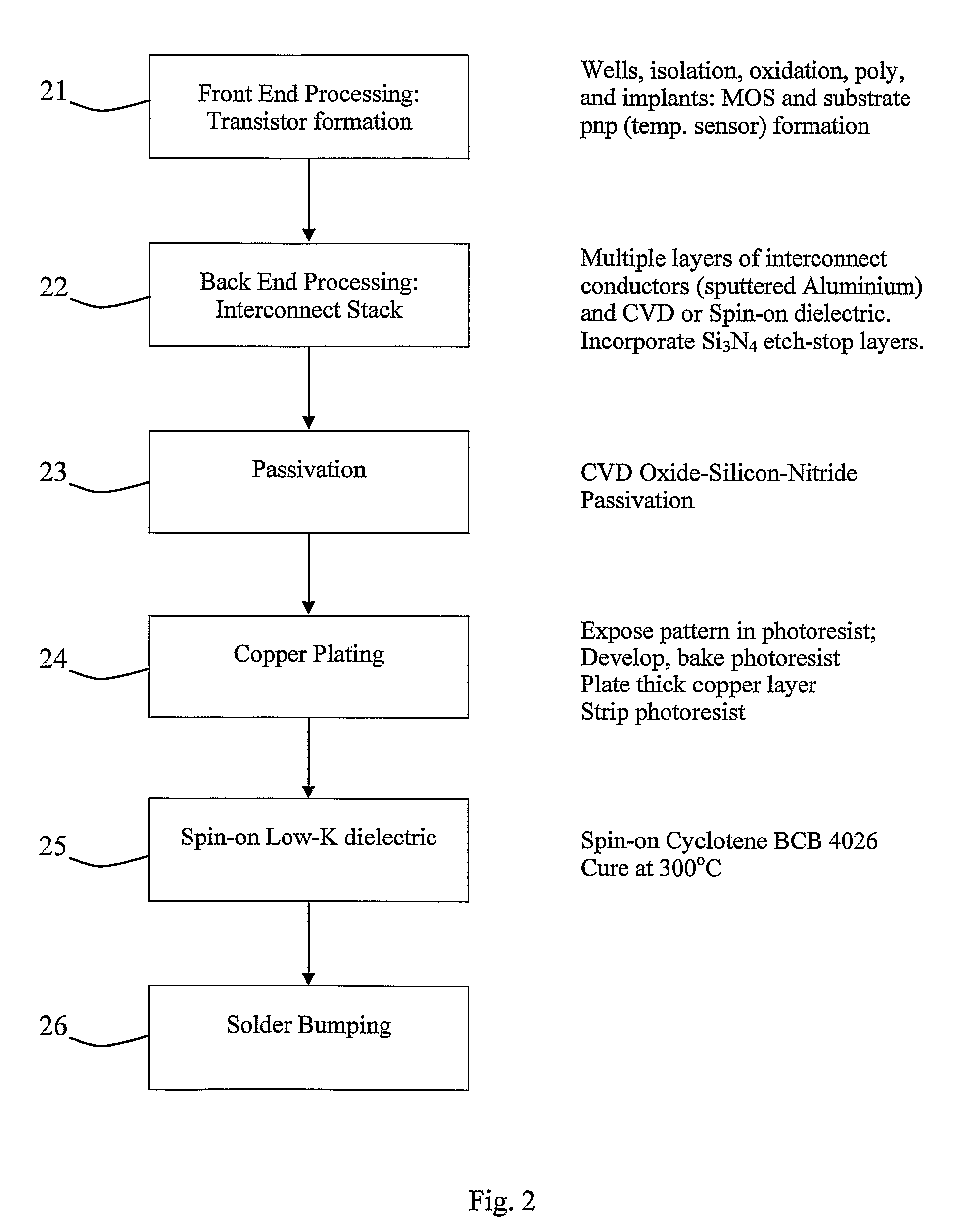Integrated Electronic Sensor
a technology of electronic sensors and integrated sensors, applied in the field of electronic sensors, can solve the problems of reducing delay, low power, and dominated by interconnect delay, and achieve the effects of good response characteristic, fast egress, and sufficient free space volum
- Summary
- Abstract
- Description
- Claims
- Application Information
AI Technical Summary
Benefits of technology
Problems solved by technology
Method used
Image
Examples
Embodiment Construction
Brief Description of the Drawings
[0049]The invention will be more clearly understood from the following description of some embodiments thereof given by way of example only with reference to the accompanying drawings in which:
[0050]FIG. 1 is a block diagram of an integrated sensor chip of the invention;
[0051]FIG. 2 is a flow diagram illustrating a production method for the chip;
[0052]FIG. 3 is a diagrammatic cross-sectional representation of the sensor chip together with some plan views of parts of the chip;
[0053]FIG. 4 is a circuit diagram of an 18-bit A-to-D converter of the chip;
[0054]FIGS. 5 to 8 are cross-sectional views of sensing parts of alternative sensor chips of the invention;
[0055]FIG. 9 is a diagram showing chip encapsulation;
[0056]FIG. 10 is a plan view and a diagrammatic side view showing an RFID tag incorporating the chip of the invention;
[0057]FIGS. 11 and 12 are perspective views of probes incorporating chip sensors of the invention;
[0058]FIG. 13 is a circuit diagr...
PUM
| Property | Measurement | Unit |
|---|---|---|
| dielectric constant | aaaaa | aaaaa |
| temperature | aaaaa | aaaaa |
| temperature | aaaaa | aaaaa |
Abstract
Description
Claims
Application Information
 Login to View More
Login to View More - R&D
- Intellectual Property
- Life Sciences
- Materials
- Tech Scout
- Unparalleled Data Quality
- Higher Quality Content
- 60% Fewer Hallucinations
Browse by: Latest US Patents, China's latest patents, Technical Efficacy Thesaurus, Application Domain, Technology Topic, Popular Technical Reports.
© 2025 PatSnap. All rights reserved.Legal|Privacy policy|Modern Slavery Act Transparency Statement|Sitemap|About US| Contact US: help@patsnap.com



